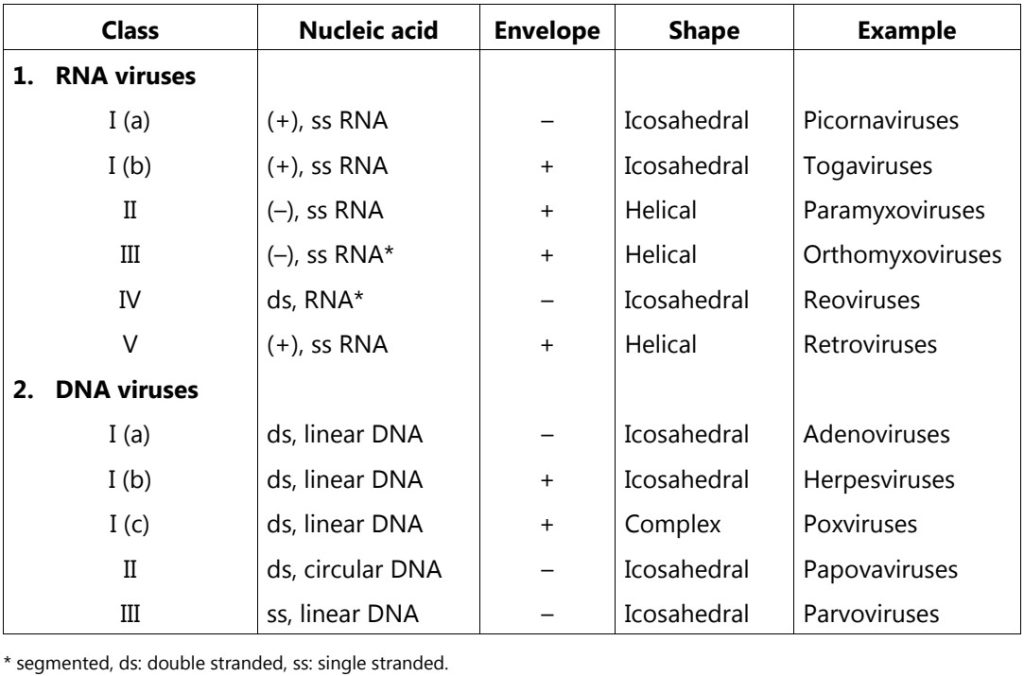When not much was known about the structure or chemical properties of viruses, they were classified by where they were found. Thus, they have been classified as bacterial, plant, and animal viruses. They have also been classified as dermotropic (skin tissue), neurotropic (nerve tissue), viscerotropic (digestive tract), and pneumotropic (respiratory system) depending upon the organs that they infect. Some scientists have even made the mode of transmission of the virus from one host to another host the basic character and classified viruses as enteric, respiratory, and arboviruses. As more and more knowledge has been gained about the structure of viruses at a chemical level, a classification has been developed based on physicochemical properties. Such properties are summarised as follows:
(A) Primary characteristics:
- Chemical nature of nucleic acid: RNA or DNA, single or double-stranded, single or segmented genome, ( ) or (–) strand, molecular weight.
- Structure of virion: Helical, icosahedral or complex, naked or enveloped, complexity, number of capsomers for icosahedral (polyhederal) virions, the diameter of nucleocapsids for helical viruses.
- Site of replication: Nucleus or cytoplasm.
(B) Secondary characteristics:
- Host range: Host species, specific host tissues, or cell types.
- Specific surface structures: e.g. antigenic properties.
- Mode of transmission: e.g. feces.
The viruses have been divided into families which are split into genera and finally species. The classification criteria may vary from family to family. The species within the genera are usually defined based on antigenic differences. Within the genera, the number of species may vary from one to more than 100.
Viruses may be classified according to their nucleic acids. A nucleic acid that encodes information for making proteins needed by a virus is called a ‘positive sense nucleic acid’. A nucleic acid made up of bases complementary to those of a positive sense nucleic acid is called a ‘negative sense nucleic acid’. The classification of various viruses has been shown in Table.
The nomenclature of viruses, like their classification, is decided by the International Committee on Taxonomy of viruses. Viruses are grouped into families which are named with the suffix ‘viridae’. Subfamilies, if any, end with the suffix ‘virinae’ and the genera have the suffix ‘virus’.
Table: Classification of viruses

Make sure you also check our other amazing Article on : Importance of Fungi
